#culture in Tuscany
Text
I colori della città: le pietre di Firenze
I colori della città: le pietre di Firenze
di Salvina Pizzuoli
Palazzo Medici Riccardi particolare della facciata
Ogni città si configura per la sua storia, per la sua posizione geografica, per il territorio e il paesaggio naturale in cui si inserisce. Sono questi aspetti che le conferisco un carattere; la rendono infatti unica e riconoscibile nelle sue forme. Non per ultima, c’è una componente che la caratterizza in maniera visibile,…

View On WordPress
0 notes
Photo


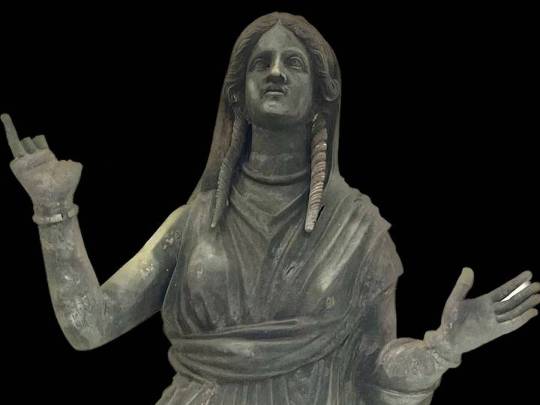
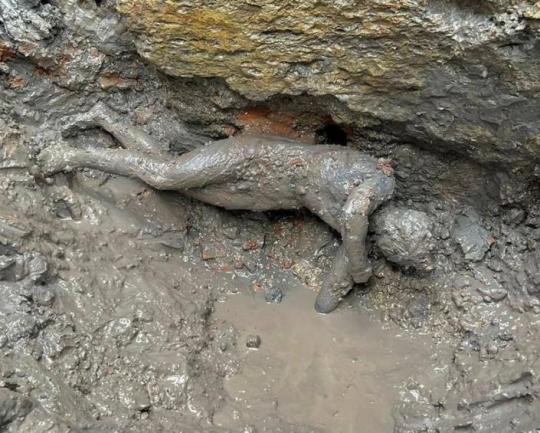


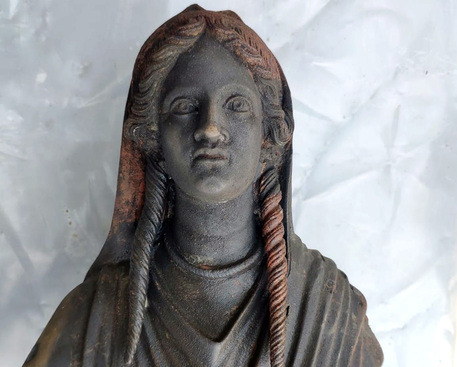
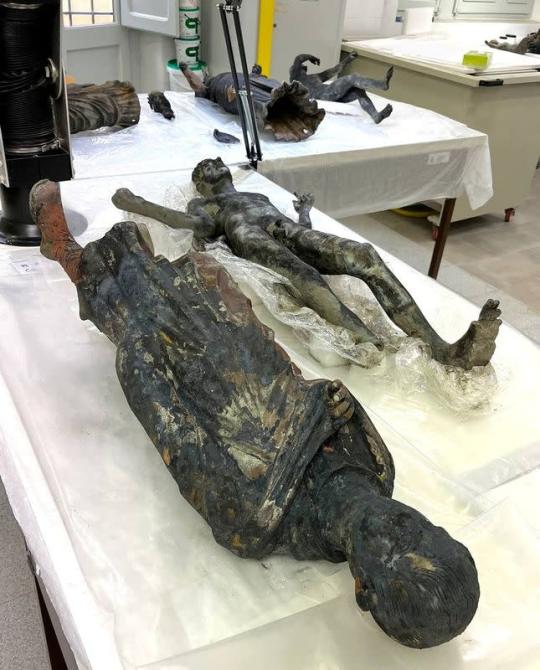

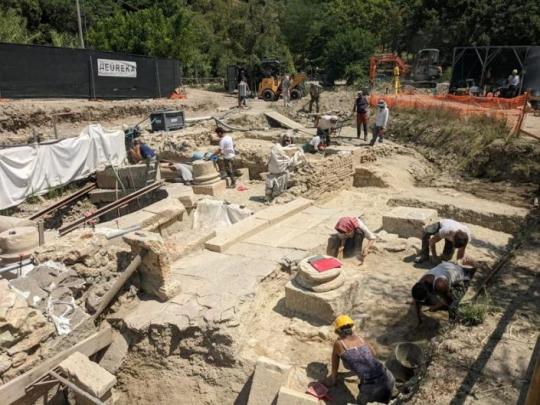

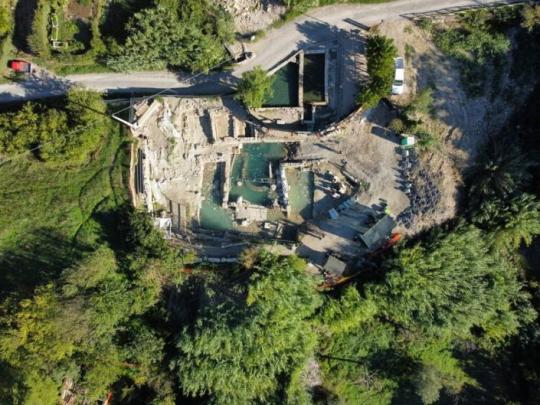
Italy Hails 'Exceptional' Discovery of Ancient Bronze Statues in Tuscany
Archaeologists in Italy have uncovered more than two dozen beautifully preserved bronze statues dating back to ancient Roman times in thermal baths in Tuscany, in what experts are hailing as a sensational find.
The statues were discovered in San Casciano dei Bagni, a hilltop town in the Siena province, about 160 kilometres (100 miles) north of Rome, where archaeologists have been exploring the muddy ruins of an ancient bathhouse since 2019.
"It is a very significant, exceptional finding," Jacopo Tabolli, an assistant professor from the University for Foreigners in Siena who coordinates the dig, said on Tuesday.
Massimo Osanna, a top culture ministry official, called it one of the most remarkable discoveries "in the history of the ancient Mediterranean" and the most important since the Riace Bronzes, a giant pair of ancient Greek warriors, were pulled from the sea off the toe of Italy in 1972.
Tabolli said the statues, depicting Hygieia, Apollo and other Greco-Roman divinities, used to adorn a sanctuary before they were immersed in thermal waters, in a sort of ritual, "probably around the 1st century AD".
"You give to the water because you hope that the water gives something back to you," he said of the ritual.
TIME OF CONFLICT
Most of the statues date to between the 2nd century BC and the 1st century AD, a period of "great transformation in ancient Tuscany" as it switched from Etruscan to Roman rule, the Culture Ministry said in a statement.
It was an "era of great conflicts" and "cultural osmosis", in which the Great Bath sanctuary of San Casciano represented a "unique multicultural and multilingual haven of peace, surrounded by political instability and war," the ministry said.
The statues were covered by almost 6,000 bronze, silver and gold coins, and San Casciano's hot muddy waters helped to preserve them "almost like as on the day they were immersed," Tabolli said.
The archaeologist said his team had recovered 24 large statues, plus several smaller statuettes, and noted that it was unusual for them to be made out of bronze, rather than terracotta.
Tabolli said this suggested they came from what he called an elite settlement, where archaeologists also found "wonderful inscriptions in Etruscan and Latin", mentioning the names of powerful local families, the ministry statement added.
According to Culture Minister Gennaro Sangiuliano, the "exceptional discovery ... confirms once again that Italy is a country of immense and unique treasures".
The ministry said the statues have been taken to a restoration laboratory in nearby Grosseto, but will eventually be put on display in a new museum in San Casciano.
#Italy Hails 'Exceptional' Discovery of Ancient Bronze Statues in Tuscany#bronze#roman bronze statues#ancient artifacts#archeology#archeolgst#history#history news#ancient history#ancient culture#ancient civilizations#ancient tuscany#ancient bath house#roman history#roman empire
1K notes
·
View notes
Text
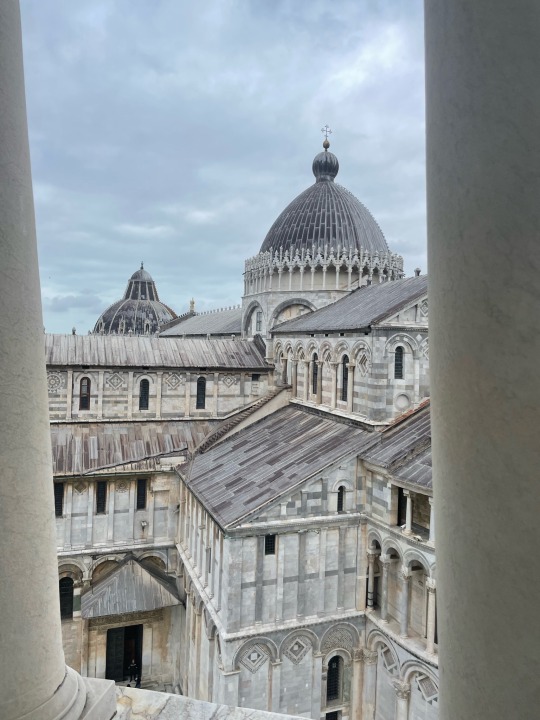

Pisa, Italy
#mailmiocuoredipietratremaancora#pisa#pisa italy#italy#italian churches#church#italian architecture#architecture#love#beauty#art#aesthetic#view#tuscany#italian art#italian culture#religion#religious art
48 notes
·
View notes
Text
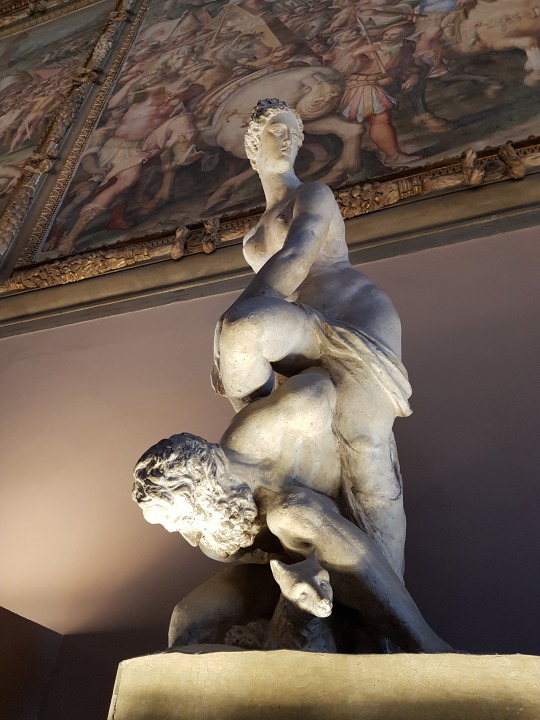
The plaster statue The Victory of Florence over Pisa, made by the Flemish sculptor Giambologna in 1565, in the Salone dei Cinquecento, Palazzo Vecchio, Florence.
Pisa is depicted as an old man and Florence as a young woman, because of the power, youth and wealth of Florence in comparison to her neighbors.
#firenze#florence#florence italy#palazzo vecchio#tuscany#italylovers#toscana#italia#italytravel#travel#travel photography#travel blog#culture#history#museum#statue#art#sculpture#16th century#renaissance#italian renaissance#late renaissance#mannerism#art history#renaissance art#art photography#art gallery
91 notes
·
View notes
Text


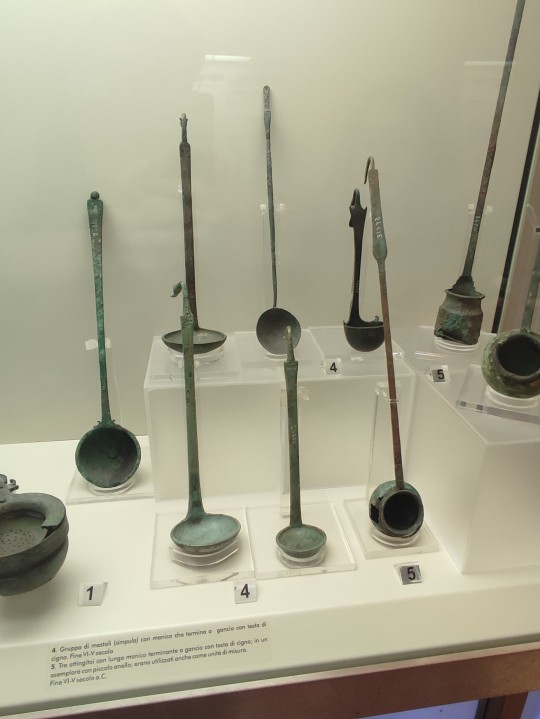





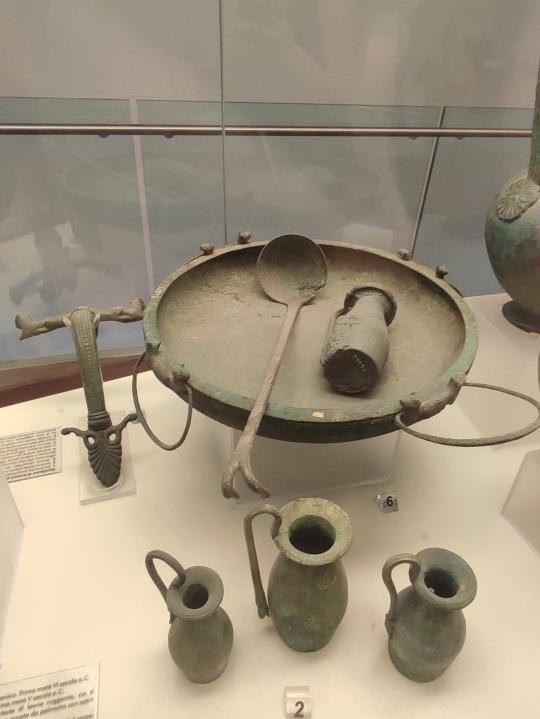
Etruscan ladles - Museo etrusco di Villa Giulia
#etruscan#ancient civilizations#ancient italy#Ancient tuscany#tuscany#Italy#Rome#Ladle#Bronze#ancient culture#archaeology
2 notes
·
View notes
Link
Tuscan Women Cook, authored by Coleen Kirnan, brings the flavors, recipes, and memories to homes everywhere with this condensed version of the weeklong immersive culinary destination experience Tuscan Women Cook has offered for more than 20 years. Enchanting, luscious, and appetizing, Tuscan Women Cook highlights culinary creativity and deep Tuscany tradition
#janet walker#haute-lifestyle.com#the-entertainment-zone.com#tuscany#tuscan women cook#italian#italian cuisine#italian culture#book review#cook book
1 note
·
View note
Text
#Florence#Tuscany#Italy#Travel#Art#History#Culture#Food#Wine#Photography#Landmarks#Attractions#Duomo#UffiziGallery#PonteVecchio#BoboliGardens#Renaissance#Architecture
0 notes
Text
Cross-posting an essay I wrote for my Patreon since the post is free and open to the public.

Hello everyone! I hope you're relaxing as best you can this holiday season. I recently went to see Miyazaki's latest Ghibli movie, The Boy and the Heron, and I had some thoughts about it. If you're into art historical allusions and gently cranky opinions, please enjoy. I've attached a downloadable PDF in the Patreon post if you'd prefer to read it that way. Apologies for the formatting of the endnotes! Patreon's text posting does not allow for superscripts, which means all my notations are in awkward parentheses. Please note that this writing contains some mild spoilers for The Boy and the Heron.

Hayao Miyazaki’s 2023 feature animated film The Boy and the Heron reads as an extended meditation on grief and legacy. The Master of a grand tower seeks a descendant to carry on his maddening duty, balancing toy blocks of magical stone upon which the entire fabric of his little pocket of reality rests. The world’s foundations are frail and fleeting, and can pass away into the cold void of space should he neglect to maintain this task. The Master’s desire to pass the torch undergirds much of the film’s narrative.

(Isle of the Dead. Arnold Böcklin. 1880. Oil on Canvas. Kunstmuseum. Basel, Switzerland.)
Arnold Böcklin, a Swiss Symbolist(1) painter, was born on October 16 in 1827, the same year the Swiss Evangelical Reformed Church bought a plot of land in Florence from the Grand Duke of Tuscany, Leopold II, that had long been used for the burials of Protestants around Florence. It is colloquially known as The English Cemetery, so called because it was the resting place of many Anglophones and Protestants around Tuscany, and Böcklin frequented this cemetery—his workshop was adjacent and his infant daughter Maria was buried there. In 1880, he drew inspiration from the cemetery, a lone plot of Protestant land among a sea of Catholic graveyards, and began to paint what would be the first of six images entitled Isle of the Dead. An oil on canvas piece, it depicts a moody little island mausoleum crowned with a gently swaying grove of cypresses, a type of tree common in European cemeteries and some of which are referred to as arborvitae. A figure on a boat, presumably Charon, ferries a soul toward the island and away from the viewer.
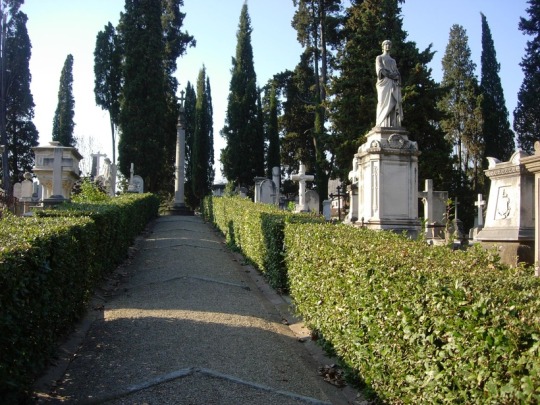
(Photo of The English Cemetery in Florence. Samuli Lintula. 2006.)
The Isle of the Dead paintings varied slightly from version to version, with figures and names added and removed to suit the needs of the time or the commissioner. The painting was glowingly referenced and remained fairly popular throughout the late 19th and early 20th centuries. The painting used to be inescapable in much of European popular culture. Professor Okulicz-Kozaryn, a philologist (someone with a deep interest in the ways language and cultural canons evolve)(2) observed that the painting, like many other works in its time, was itself iterative and became widely reiterated and referenced among its contemporaries. It became something like Romantic kitsch in the eyes of modern art critics, overwrought and excessively Byronic. I imagine Miyazaki might also resent a work of that level of manufactured ubiquity, as Miyazaki famously held Disney animated films in contempt (3). Miyazaki’s films are popularly aspirational to young animators and cartoonists, but gestures at imitation typically fall well short, often reducing Miyazaki’s weighty films to kitschy images of saccharine vibes and a lazy indulgence in a sort of empty magical domestic coziness. Being trapped in a realm of rote sentiment by an uncritical, unthoughtful viewership is its own Isle of Death.

(Still from The Boy and the Heron, 2023. Studio Ghibli.)
The Boy and the Heron follows a familiar narrative arc to many of Miyazaki’s other films: a child must journey through a magical and quietly menacing world in order to rescue their loved ones. This arc is an echo of Satsuki’s journey to find Mei in My Neighbor Totoro (1988) and Chihiro’s journey to rescue her parents Spirited Away (2001). To better understand Miyazaki’s fixation with this particular character journey, it can be instructive to watch Lev Atamanov’s 1957 animated film, The Snow Queen (4)(5), a beautifully realized take on Hans Christian Andersen’s 1844 children’s story (6)(7). Mahito’s journey continues in this tradition, as the boy travels into a painted world to rescue his new stepmother from a mysterious tower.
Throughout the film, Miyazaki visually references Isle of the Dead. Transported to a surreal world, Mahito initially awakens on a little green island with a gated mausoleum crowned with cypress trees. He is accosted by hungry pelicans before being rescued by a fisherwoman named Kiriko. After a day of catching and gutting fish, Mahito wakes up under the fisherwoman’s dining table, surrounded by kokeshi—little wooden dolls—in the shapes of the old women who run Mahito’s family’s rural household. Mahito is told they must not be touched, as the kokeshi are wards set up for his protection. There is a popular urban legend associated with the kokeshi wherein they act as stand-ins for victims of infanticide, though there seems to be very little available writing to support this legend. Still, it’s a neat little trick that Miyazaki pulls, placing a stray reference to a local legend of unverifiable provenance that persists in the popular imagination, like the effect of fairy stories passed on through oral retellings, continually remolded each new iteration.
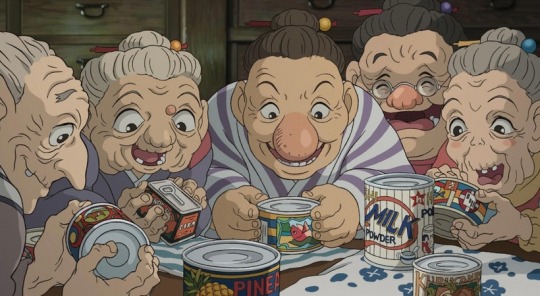
(Still from The Boy and the Heron, 2023. Studio Ghibli.)
Kiriko’s job in this strange landscape is to catch fish to nourish unborn spirits, the adorable floating warawara, before they can attempt to ascend on a journey into the world of the living. Their journey is thwarted by flocks of supernatural pelicans, who swarm the warawara and devour them. This seems to nod to the association of pelicans with death in mythologies around the world, especially in relationship to children (8). Miyazaki’s pelicans contemplate the passing of their generations as each successive generation seems to regress, their capacity to fulfill their roles steadily diminishing.
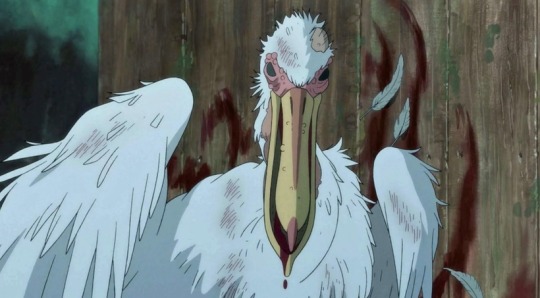
(Still from The Boy and the Heron, 2023. Studio Ghibli.)
As Mahito’s adventure continues, we find the landscapes changing away from Böcklin’s Isle of the Dead into more familiar Ghibli territories as we start to see spaces inspired by one of Studio Ghibli’s aesthetic mainstays, Naohisa Inoue and his explorations of the fantasy realms of Iblard. He might be most familiar to Ghibli enthusiasts as the background artists for the more fantastical elements of Whisper of the Heart (1995).

(Naohisa Inoue, for Iblard Jikan, 2007. Studio Ghibli.)
By the time we arrive at the climax of The Boy and the Heron, the fantasy island environment starts to resemble English takes on Italian gardens, the likes of which captivated illustrators and commercial artists of the early 20th century such as Maxfield Parrish. This appears to be a return to one of Böcklin’s later paintings, The Island of Life (1888), a somewhat tongue-in-cheek reaction to the overwhelming presence of Isle of the Dead in his life and career. The Island of Life depicts a little spot of land amid an ocean very like the one on which Isle of the Dead’s somber mausoleum is depicted, except this time the figures are lively and engaged with each other, the vegetation lush and colorful, replete with pink flowers and palm fronds.

(Island of Life. Arnold Böcklin. Oil on canvas. 1888. Kunstmuseum. Basel, Switzerland.)
In 2022, Russia’s State Hermitage Museum in Saint Petersburg acquired the sixth and final Isle of the Dead painting. In the last year of his life, Arnold Böcklin would paint this image in collaboration with his son Carlo Böcklin, himself an artist and an architect. Arnold Böcklin spent three years painting the same image three times over at the site of his infant daughter’s grave, trapped on the Isle of the Dead. By the time of his death in 1901 at age 74, Böcklin would be survived by only five of his fourteen children. That the final Isle of the Dead painting would be a collaboration between father and son seemed a little ironic considering Hayao Miyazaki’s reticence in passing on his own legacy. Like the old Master in The Boy and the Heron, Miyazaki finds himself with no true successors.
The Master of the Tower's beautiful islands of painted glass fade into nothing as Mahito, his only worthy descendant, departs to live his own life, fulfilling the thesis of Genzaburo Yoshino’s 1937 book How Do You Live?, published three years after Carlo Böcklin’s death. In evoking Yoshino and Böcklin’s works, Hayao Miyazaki’s The Boy and the Heron suggests that, like his character the Master, Miyazaki himself must make peace with the notion that he has no heirs to his legacy, and that those whom he wished to follow in his footsteps might be best served by finding their own paths.
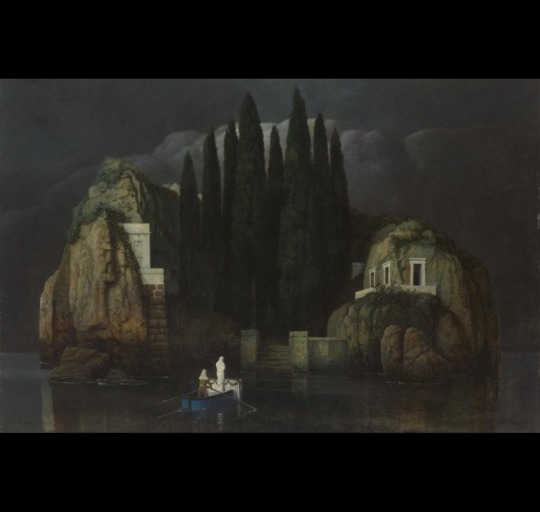
(Isle of the Dead. Arnold and Carlo Böcklin. Oil on canvas. 1901. The State Hermitage Museum. Saint Petersburg, Russia.)
INFORMAL ENDNOTES
1 - Symbolists are sort of tough to nail down. They were started as a literary movement to 1 distinguish themselves from the Decadents, but their manifesto was so vague that critics and academics fight about it to this day. The long and the short of it is that the Symbolists made generous use of a lot of metaphorical imagery in their work. They borrow a lot of icons from antiquity, echo the moody aesthetics from the Romantics, maintained an emphasis on figurative imagery more so than the Surrealists, and were only slightly more technically married to the trappings of traditionalist academic painters than Modernists and Impressionists. They're extremely vibes-forward.
2 - Okulicz-Kozaryn, Radosław. Predilection of Modernism for Variations. Ciulionis' Serenity among Different Developments of the Theme of Toteninsel. ACTA Academiae Artium Vilnensis 59. 2010. The article is incredibly cranky and very funny to read in parts. Contains a lot of observations I found to be helpful in placing Isle of the Dead within its context.
3 - "From my perspective, even if they are lightweight in nature, the more popular and common films still must be filled with a purity of emotion. There are few barriers to entry into these films-they will invite anyone in but the barriers to exit must be high and purifying. Films must also not be produced out of idle nervousness or boredom, or be used to recognise, emphasise, or amplify vulgarity. And in that context, I must say that I hate Disney's works. The barrier to both the entry and exit of Disney films is too low and too wide. To me, they show nothing but contempt for the audience." from Miyazaki's own writing in his collection of essays, Starting Point, published in 2014 from VIZ Media.
4 - You can watch the movie here in its original Russian with English closed captions here.
5 If you want to learn more about the making of Atamanoy's The Snow Queen, Animation Obsessive wrote a neat little article about it. It's a good overview, though I have to gently disagree with some of its conclusions about the irony of Miyazaki hating Disney and loving Snow Queen, which draws inspiration from Bambi. Feature film animation as we know it hadonly been around a few decades by 1957, and I find it specious, particularly as a comic artistand author, to see someone conflating an entire form with the character of its content, especially in the relative infancy of the form. But that's just one hot take. The rest of the essay is lovely.
6 - Miyazaki loves this movie. He blurbed it in a Japanese re-release of it in 2007.
7 - Julia Alekseyeva interprets Princess Mononoke as an iteration of Atamanov's The Snow Queen, arguing that San, the wolf princess, is Miyazaki's homage to Atamanoy's little robber girl character.
8 - Hart, George. The Routledge Dictionary of Egyptian Gods And Goddesses. Routledge Dictionaries. Abingdon, United Kingdom: Routledge. 2005.
#hayao miyazaki#the boy and the heron#how do you live#arnold böcklin#carlo böcklin#symbolists#symbolism#animation#the snow queen#lev atamanov#naohisa inoue#the endnotes are very very informal aksjlsksakjd#sorry to actual essayists
505 notes
·
View notes
Text
The Langobards

The Langobards/Lombards/Longobards are an Italic-Germanic tribe with origins in southern Scandinavia around the first centuries B.C. and A.D.
Their steady migration southward can be retraced by archaeological artifacts, which show their Scandinavian origin.
Their early connections to (the geographical city of) Rome made them very influential in the Western Roman world; on financial, military, religious but also law practice and kingship levels.
The Lombards were quickly christened and were the founding fathers of many religious institutions in northern Italy, ruled Italy, and adapted/adopted Roman Law, making for a culturally rich period. Their capital Pavia is located in the Italian province of Lombardy, named after, you guessed it.
It has to be said (it sounds like a fake fact but is not) that their name means “Long Beards”. In many European languages the descriptive name can be heard in “Langobard” also written as “Longobard”.
Image:
Langobardic radiate headed bow brooch
Found in: Chiusi - Tuscany, Italy
#frankish#merovingian#viking archaeology#archaeology#carolingian#charlemagne#field archaeology#viking mythology#merovingian archaeology#germanic mythology#lombards#Lombardi#lombardia#Lombardic#longobardi#Langobards#norse mythology#anglo saxon#field archaeologist#viking#frisian#odin#vikings#germanic#germanic folklore#germanic archaeology#wodan#anglo saxon archaeology#history#jewelry
139 notes
·
View notes
Text
Feli is a snob. He doesn't appreciate popular culture, he doesn't appreciate the work of the Italian diaspora in other countries, he thinks very little of poor people food and customs. He tries to claim pizza for his own even though he'd barely heard of it before WWII.
Lovi is not a snob. He loves the Iron Man statue in Tuscany, and all of the different kinds of pizza people come up with. He likes Spaghetti Westerns and gives Alfred and the other diaspora groups proper credit for modern pizza.
#hws south italy#hws italy#hws itabros#hetalia#hws hetalia#hetalia headcanons#aph hetalia#hws north italy
71 notes
·
View notes
Text
Zodiac Signs, Cities & Curious Facts! 🌆
Each city was selected by me from "The Rulership Book" by Rex E. Bills, alongside one fact that matches that particular sign's energy! There are more cities and places that align with the vibration of each sign, but these are the ones I picked for this post. All pictures are from Google Images.
Enjoy this random and (hopefully) fun thread!😁
♈Aries: FLORENCE, Italy
Florence has a unique street festival: The "Calcio Storico" is a traditional street football game played annually there. The game involves four teams representing the four historic quarters of the city, and it's known for its rough and intense style of play!


♉Taurus: LEIPZIG, Germany
Leipzig is known as the "City of Music": Leipzig has a rich musical heritage and is considered one of the world's most important cities for classical music. Famous composers such as Johann Sebastian Bach, Richard Wagner, and Felix Mendelssohn Bartholdy have strong connections to Leipzig, and their music is celebrated in the city's numerous concert halls, museums, and festivals.
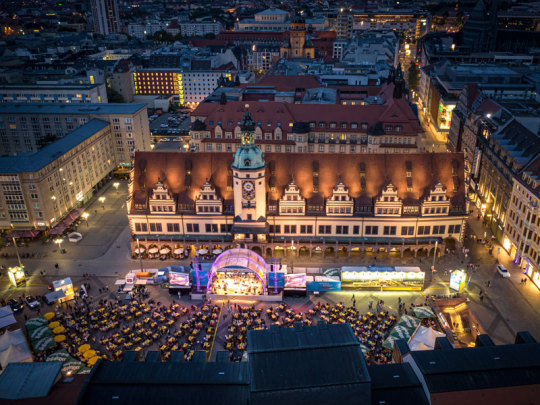

♊Gemini: LONDON, England
London has a "whispering gallery": The Whispering Gallery in St. Paul's Cathedral is a circular gallery that runs around the interior of the dome. Due to its unique acoustics, if you whisper against the wall on one side of the gallery, the sound can be heard on the other side, over 100 feet away.

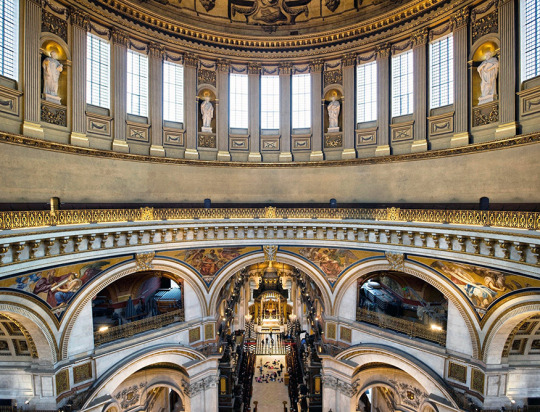
♋Cancer: ISTANBUL, Turkey
Istanbul has a famous street for cats: The "Cat Street" or "Kedi Sokak" in Turkish is a narrow street in the historic district of Sultanahmet that is home to dozens of stray cats. The cats are well-fed and cared for by locals, and the street has become a popular tourist attraction.
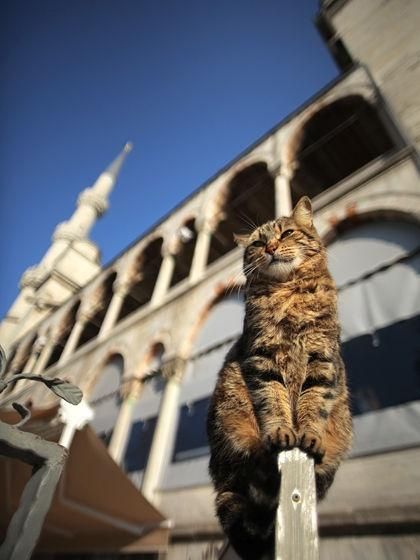

♌Leo: BERLIN, Germany
Berlin is a graffiti artist's paradise: The city has a long history of street art and is home to some of the most famous graffiti murals in the world. The East Side Gallery, a section of the Berlin Wall that has been turned into an open-air gallery, features over 100 paintings by artists from around the world.
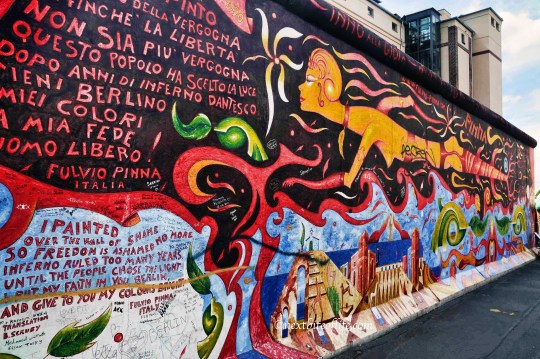

♍Virgo: MOSCOW, Russia
Moscow has a rich literary history: Many famous Russian writers, including Leo Tolstoy, Fyodor Dostoevsky, and Anton Chekhov, lived and worked in Moscow. It also has the largest number of public libraries in the world: "The Russian State Library" , which is the largest library in Europe and the second largest library in the world, after the Library of Congress in the United States.


♎Libra: VIENNA, Austria
Vienna has a rich musical history: Vienna has been a center of musical innovation and creativity for centuries and has been home to many famous composers such as Mozart, Beethoven, and Strauss. Today, the city is renowned for its classical music scene and is home to the world-famous Vienna Philharmonic Orchestra.
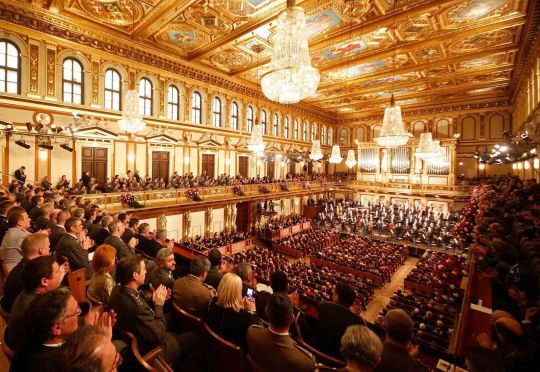

♏Scorpio: TOKYO, Japan
Tokyo has a unique fashion scene: Tokyo's fashion scene is known for its avant-garde and eclectic styles, with Harajuku being the center of youth fashion culture. "Gothic Lolita" is part of Harajuku, and it incorporates darker and more macabre elements into the Lolita fashion aesthetic.


♐Sagittarius: TUSCANY, Italy
Tuscany is home to the oldest university in Europe: The University of Bologna, which is located in Tuscany, is the oldest university in Europe, having been founded in 1088. It is still one of the most prestigious universities in Italy.
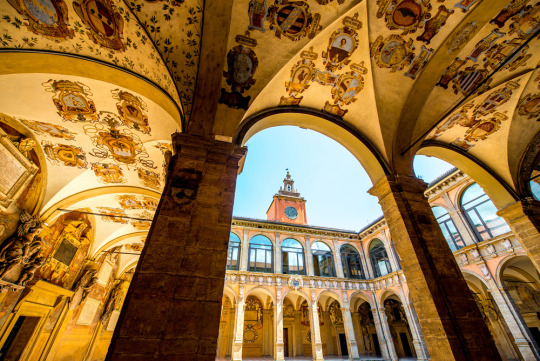
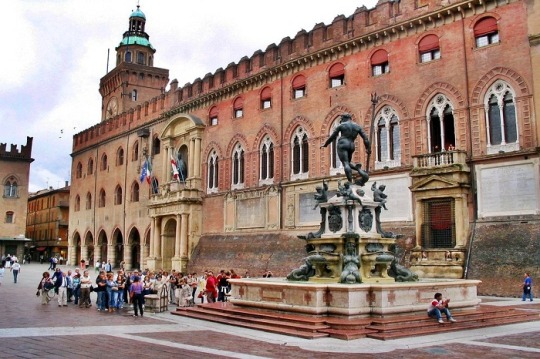
♑Capricorn: BRUSSELS, Belgium
Brussels is home to the "Atomium": The Atomium is a unique architectural structure in Brussels that was built for the 1958 World Exposition. It is designed to represent an iron crystal magnified 165 billion times, and it has become an iconic symbol of the city.
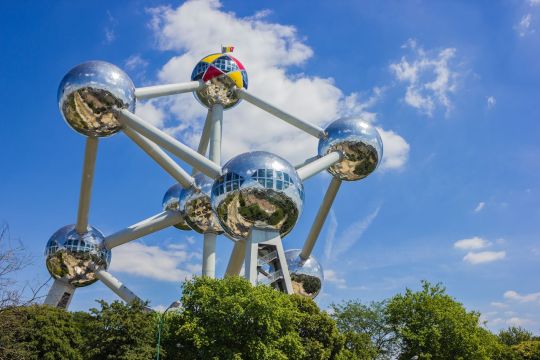

♒Aquarius: LOS ANGELES, California
LA is the birthplace of the Internet: The first successful transmission of a message over the Internet occurred on October 29, 1969, between two computers located at the University of California, Los Angeles (UCLA) and the Stanford Research Institute. This event is considered the birth of the Internet.


♓Pisces: GALICIA, Spain
Galicia is home to an ancient spiritual destination: The Way of St. James, also known as the Camino de Santiago, is a famous pilgrimage route that leads to the cathedral of Santiago de Compostela in Galicia. Every year, thousands of people from all over the world make the 780 km journey on foot, bicycle, or horseback. Many of them walk the route for spiritual reasons, while others enjoy the physical challenge and the opportunity to meet people from all over the world.
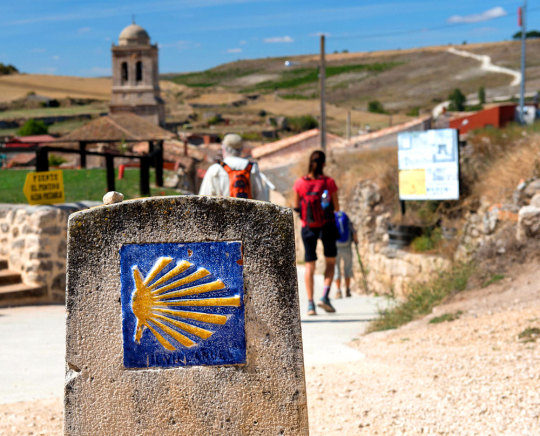

Now, that was a pleasure to put together! How do you feel about the fact/city for your sign? As a Virgo, I'd love to visit the Moscow library, but as a weird/edgy fashion sucker, Tokyo seems like a whole lot of fun! Also, the Aries one made me LOL! Y'all just can't stop fighting, can you? 😂
Which fact/city is your favorite one(s)? Let me know down below! 🖤
- Foxbörn
ᴍᴀꜱᴛᴇʀʟɪꜱᴛ 1
ᴄʜᴀʀᴛ ʀᴇᴀᴅɪɴɢꜱ
ᴡᴀɴᴛ ᴛᴏ ʙᴜʏ ᴍᴇ ᴀ ᴄᴏꜰꜰᴇᴇ?
#astro notes#astrology#astro observations#astrology notes#birth chart#zodiac#astro community#zodiac signs#horoscope#aries#taurus#gemini#cancer#leo#virgo#libra zodiac sign#scorpio#sagittarius#capricorn#aquarius#pisces#travel
134 notes
·
View notes
Note
Where are you guys from ( region talking)? Greetings from tuscany!!
Hello, mod here!
I am British and do not feel qualified to do this to a good extent without hours of research which I simply do not have the time for, however, there is a blog I really love, @la-principessa-della-squadra who goes into a lot of detail about Italian culture for La Squadra, so I suggest you go check her page out :)
I apologise for not being able to answer this one.
I do know that Melone is Tuscan though, something to do with his 'Di Molto!' phrase if i am correct
12 notes
·
View notes
Text

Statue of Apollo 'Lizard Killer' Found at Etruscan and Roman Spa
Archaeologists have found a marble statue of Apollo Sauroctonos, also known as the “Lizard Killer”, during excavations of an Etruscan and Roman spa at San Casciano dei Bagni in Tuscany.
The spa is fed by geothermal springs, which the Etruscans used to supply water at a mean temperature of 42 °C (108 °F) to the complex of Balnea Clusinae.
According to legend, the site was founded by Porsenna, an Etruscan king of Chiusi, although archaeologists suggest that the complex was built by the Etruscans in the third century BC.
During the Roman period, the spa became a popular attraction for the therapeutic benefits, with notable figures such as Caesar Augustus being a frequent visitor.


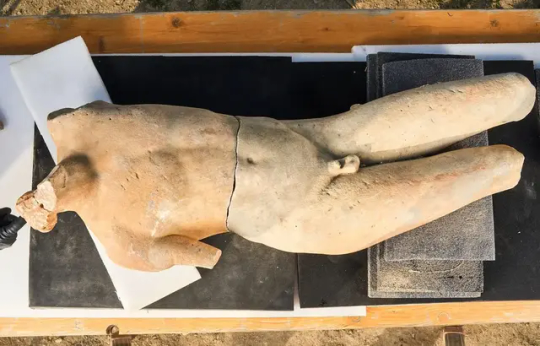
Archaeologists have found fragments of a life-sized Apollo Sauroctonos statue on the edge of the Great Bath, which are Roman copies of a bronze statue created by the Greek sculptor Praxiteles, the most renowned of the Attica sculptors of the 4th century BC.
Example copies generally date from the 1st to 2nd century AD and depict Apollo in his youth about to catch a lizard climbing up a tree. The Roman poet, Martial, wrote an epigram about the Apollo Sauroctonos statues “Spare the lizard, treacherous boy, creeping toward you; it desires to perish by your hands.”

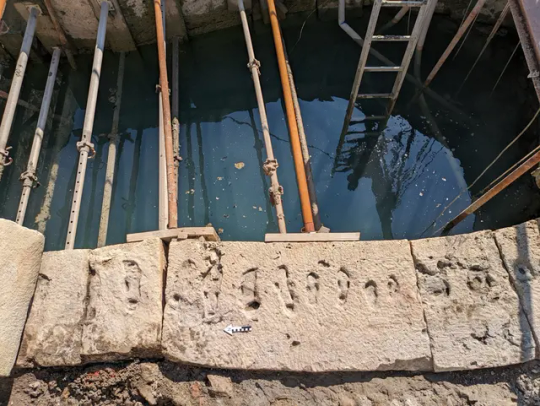
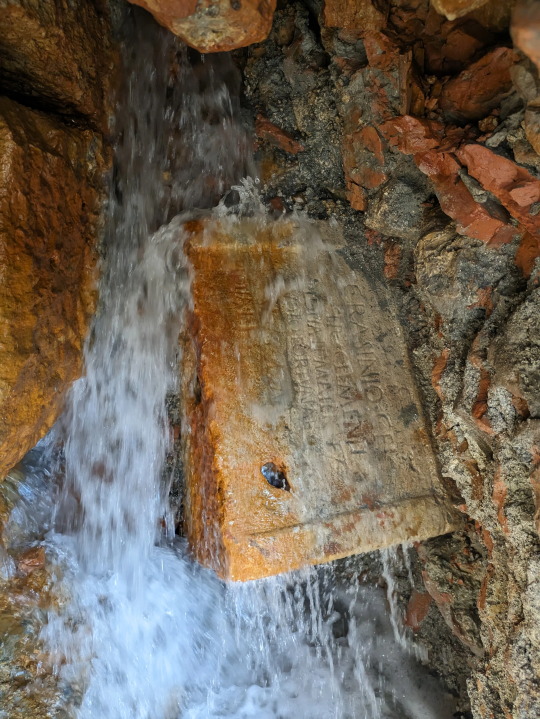
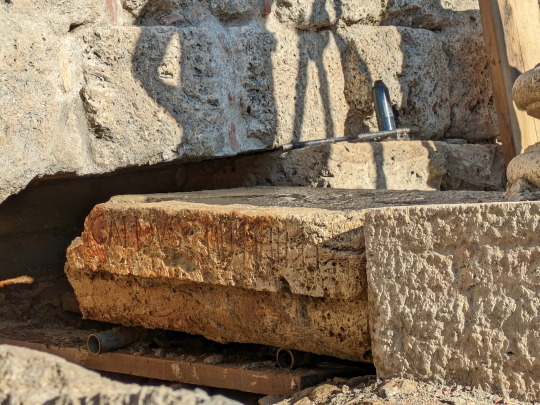
Apollo, revered as the deity associated with healing and ailments, received votive offerings from petitioners seeking remedies for their afflictions. Additionally, the depiction of Apollo hunting a lizard can be associated with ophthalmology, as lizards were considered a key ingredient for curing eye complaints.
Excavations also uncovered a travertine votive altar with a bilingual inscription in Latin and Etruscan from the 1st century AD, indicating the ongoing influence of Etruscan culture well into the Roman Imperial Era.
By Mark Milligan.


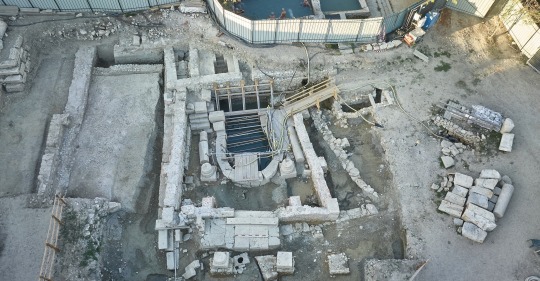
#Statue of Apollo 'Lizard Killer' Found at Etruscan and Roman Spa#San Casciano dei Bagni in Tuscany#statue#sculpture#ancient artifacts#archeology#archeolgst#history#history news#ancient history#ancient culture#ancient civilizations#roman history#roman empire#roman art#ancient art
127 notes
·
View notes
Text

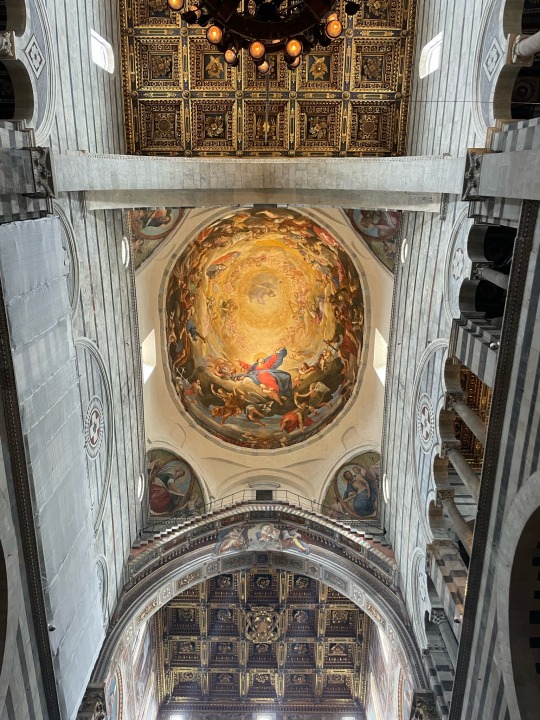
Quando mi chiedono perché non ho una lista delle mie chiese preferite in Italia
#mailmiocuoredipietratremaancora#pisa#pisa italy#italy#church#italian churches#love#beauty#art#aesthetic#architecture#italian architecture#italian art#tuscany#italian culture#frescoes#italian painting#painting#religion#religious art#religious architecture
30 notes
·
View notes
Text

Michelangelo's masterpiece David, which has a height of 5.17 meters (17 feet) and was created from a block of marble from Carrara. (Galleria dell'Accademia, Florence)
#firenze#david and goliath#michelangelo#michelangelo buonarroti#italy#italia#toscana#tuscany#florence#florence italy#art#traditional art#artwork#art history#culture#italian culture#renaissance#high renaissance#rinascimento#italytravel#travel photography#travel#carrara#white marble#sculpture#masterpiece#art gallery#travel blog#galleria dell'accademia#old testament
20 notes
·
View notes
Video
youtube
Musica Matrimonio da favola L'arte di intrattenere con le giuste atmosfere i momenti di incontro e relax dei vostri ospiti e del divertimento nel ballo tutta la notte, è una questione di dettagli che vive nell'esperienza e di attimi. Non si raggiunge con una playlist uguale per tutte le occasioni. E' un lavoro artistico che necessita della giusta sensibilità e cultura musicale per rendere la vostra festa di matrimonio un evento che resterà nella memoria collettiva di tutti i presenti. Anche il crescendo della serata, l'arte di far urlare e cantare i ritornelli delle canzoni al cambio di mixaggio, è una caratteristica legata all'esperienza. Potrete indicarmi i vostri gusti musicali ed io su queste ed altre caratteristiche creerò come un sarto, la vostra serata. Indicatemi la vostra data, la location, il numero approssimativo di ospiti, sarò felice di aiutarvi ad organizzare un fantastico wedding party. La vostra serata. [email protected] +393283334184 https://romadjpianobar.com https://weddingdj.it The art of entertaining with the right atmosphere the moments of meeting and relaxation of your guests and the fun in the dance all night, is a matter of details that lives in the experience and moments. You do not reach it with an equal playlist for all occasions. It’s an artistic work that needs the right sensitivity and musical culture to make your wedding party an event that will be remembered in the collective memory of everyone present. The growing of the evening, the art of making the chorus of the songs scream and sing at the change of mixing, is also a characteristic linked to the experience. You can tell me your musical tastes and I will create your evening as a tailor. Tell me your date, location, approximate number of guests, I will be happy to help you organize a fantastic wedding party. This is your night. #weddingdj #weddingdjitaly #bestweddingdj #weddingdjtuscany #wedding #weddingitaly #weddingvideo #weddingmusic #djforwedding #djservice #weddingdjrome #musicwedding #saxdj #weddingmusic #musicwedding #weddingitaly #weddingrome #weddinginitaly #weddingumbria #weddingsorrento #weddingnaples #WeddingDjGianpieroFatica #DjGianpieroFatica #djmobile #djservice #weddingaperitiv #70s #80s #80smusic #disco #funky #classicrock #ballades #irish #latinmusic #housemusic #edm #edmmusic #edmmix #feste40anni #feste50anni #feste60anni #festeprivate #festeprivateroma #privateparty #weddingceremony #weddingceremonymusic #djmatrimonio #djpermatrimonio #musicamatrimonio #djbodas #casamento #oldschool #Weddingdj #weddingdjrome #weddingdjitaly #weddingitalystyle #Weddingceremony #weddingreception #weddingparty #weddingitaly #weddingmusic #musicwedding #weddingdjs #weddingdjservice #weddinginrome #weddinginsorrento #weddingintuscany #djservice #Djmobile #70s #80s #90s #80smusic #disco #housemusic #latinmusic #jazzmusic #jazzdance #Djsax #djoldschool #djmobile #dj #djservice #djsong #djselection #djweddingstyle #djwedding #weddingdjflorence #romadjpianobar #djset #djoldschool #radiocontactitaly #funkydiscoradio #funkyhouse #funkyhousemusic #djentertainment #djvocalist #djpianobar #djanimatrice #djanimazione #bestweddingmusic #tuscanywedding #weddingintuscany #djs #weddinginflorence #luxurywedding #destinationwedding #gettingmarried #tuscanstyle #realwedding #tuscany #marriedintuscany #marriedinitaly #marriedinrome #sax #wedding #matrimonio #saxmatrimonio #weddingsax #luxuryevent #luxury #privateparty #saxo #sassofonista #saxophonist #livesax #vinyl #djviral #djanni70 #djanni80 #djanni90 #musicaanni70 #musicaanni80 #musicaanni90 #anni70 #anni80 #anni90
#youtube#wedding weddingitaly weddingvideo weddingmusic djforwedding djservice weddingdjrome musicwedding saxdj weddingmusic musicwedding weddingital
60 notes
·
View notes